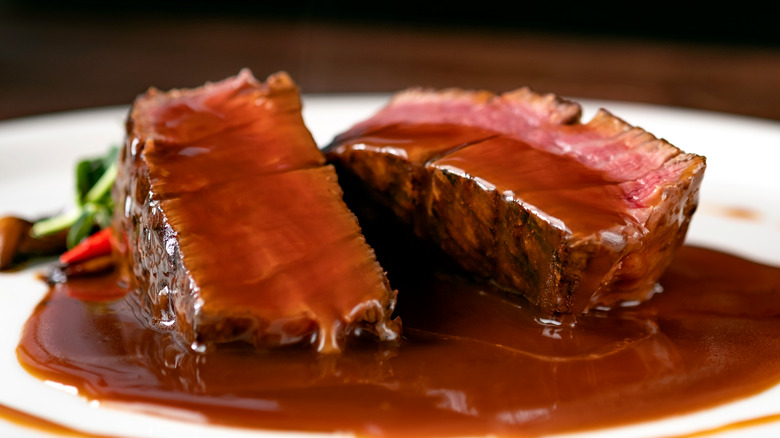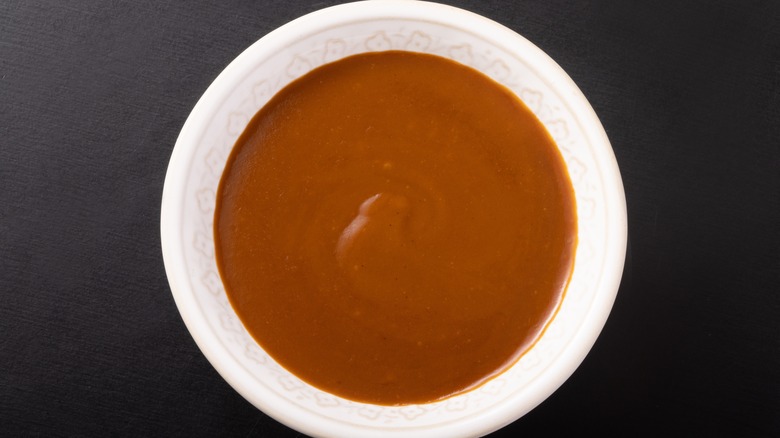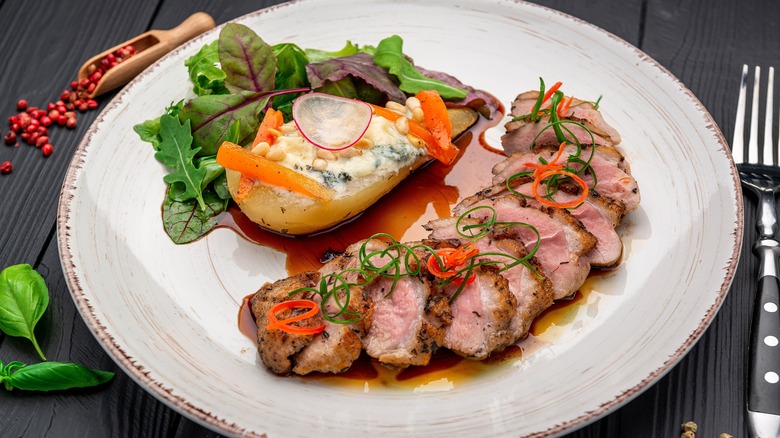Espagnole: The French Mother Sauce You May Not Be Familiar With
Where would we be without sauces? While you can certainly prepare a fine dish without sauce, sauces form the basis of so many foods that it's hard to imagine cuisine without them, bringing rich, smooth flavors to a dish that you just can't achieve otherwise. Most sauces in European cooking are generally considered to originate from the five or six (depending on the source) French mother sauces: béchamel, tomato, velouté, hollandaise, espagnole, and mayonnaise.
While béchamel, tomato, hollandaise, and mayonnaise are certainly familiar to most international audiences, what exactly is espagnole sauce? It's more common than you might think: If you've ever had a beef-based sauce like a demi-glace, you've experienced espagnole sauce. Essentially, espagnole is the savory brown sauce among the mother sauces with a deep, rich, beefy flavor. The craziest part, though, might be that while it's considered a French mother sauce, it may not even be originally from France at all, but rather from Spain.
Espagnole's origins are unclear
The origins of espagnole sauce are hinted at in its name: "espagnole" is the French word for "Spanish." But was the sauce originally created in Spain, or was it simply named after Spain (much like crème anglaise is named after England), perhaps due to the inclusion of tomato sauce in its introduction? Sources diverge significantly here. One popular theory suggests that French chefs added tomato to a brown sauce, thus making it "Spanish," for Louis XIII's wedding to Anne of Austria. However, there's no definitive answer.
What we do know is the method of making espagnole: Carrots and onions are cooked in butter, then a brown roux is made using flour. Stock (either veal or beef) is added, along with tomato puree, celery, garlic, and herbs, whisking continuously. The sauce is then reduced until it coats the back of a spoon, and is finally strained to remove all remaining solids. Voilà: espagnole sauce.
All sorts of sauces are made from espagnole
As for how it's used, espagnole is typically served with dark meats, specifically red meats. This is most likely how you would have had it, in a demi-glace, a brown sauce reduction where espagnole is reduced over heat and finished with cooking sherry to form a thick glaze. There are other types of espagnole-based sauces: chasseur (or "hunter's sauce") is made with shallots, mushrooms, and white wine, then reduced. Africaine (another sauce named after a place) is made with tomatoes, onions, peppers, and herbs. Bigarade, meanwhile, is flavored with orange and lemon and added to duck drippings — it's the quintessential sauce for duck à l'orange. And Bercy sauce is reduced with white wine and shallots, typically served with seafood.
All these sauces originate from the simple espagnole sauce. So, if you've ever enjoyed a meal containing any one of them, you know full well which mother sauce is to thank.


